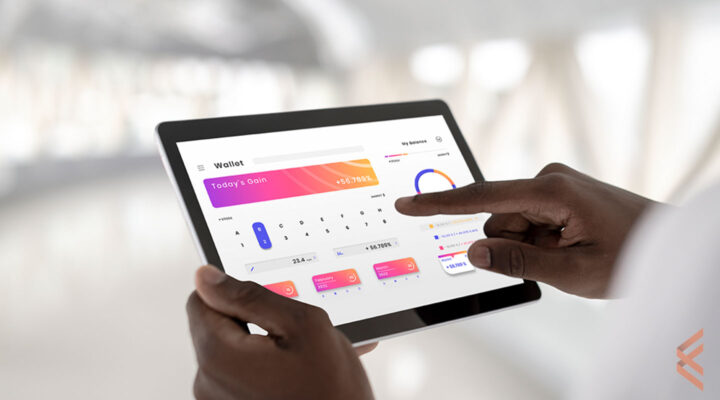by KenboxTech
Connecting dots using technology will be defining moment
As HR function seems becoming more automated, what are some of the most important areas we see transforming workplaces by digital adaptation?
RT Complexities, Competition & Volatility are the factors that define business today. In these circumstances, the business has to ensure quick decisions with accuracy. The accuracy and speed can only be achieved when all required data is collected & analyzed; patterns are devised & interpreted. It is relatively simple for other functions, as the data flow mechanically and is stored & analysed easily. On the other hand, for the HR function, challenges are manifold. The challenge starts with capturing people data. Every human interaction in a formal environment is data for HR, to be used later. Thereafter come HR processes. The HR processes are not defined & distinguished mechanically. Every other HR process in every other organisation is tweaked to its requirements. Lastly, HR success is dependent on how successfully the entire workforce in an organisation accepts and adopts renewed work processes.
So far, automation in HR started with all those processes that are mechanical in nature and relatively easy to automate. It includes core HR. With limited success over there, efforts are being made to move on to other HR processes which are complex due primarily to variables and data collection challenges. Most of the companies in this industry got stuck here.
At Kenbox, we have moved much beyond conventional solutions within HR. We have conceived a very new line of people solutions that directly add economic value to organisations under PrajjoBIZ. Solutions for example, help in avoiding over sizing of organisations, computing people effectiveness holistically, objectively; etc.
Learning, Training, and Development is another area that has seen tremendous traction of late. Kenbox is offering seemingly the largest LDS suite for organisations to plan training needs, their delivery, and impact assessment. Learning, Training & Development are the areas – a few to mention which is transforming workplaces and making organisations adopt new-age digital HR.
Kenbox has planned to go much beyond the current state of digitalization in HR and offer a lot more to truly convert the HR function into a business function, like other functions.
How HR professionals should prepare themselves in terms of their own skill sets to make optimum use of technology?
RT What has been a challenge in the past where data was not available to business managers, including for HR to build and base their decisions on certain defined patterns; now it is a boon as the enormous amount of data is not only available but easy to use, using new-age technologies.
In my view, analytical skill is going to be a differentiator, individually for professionals irrespective of functions and for organisations. Demand trend for analytical skills in organisations is a precursor, so is the trend for more & more enrolments in analytical skill development courses and training programs. Besides analytical skills, the skill of adoption – required for the new normal work culture will be a trendsetter. The success for individuals and organisations again will be on how quickly they adopt the new normal. HR shall be playing a very critical role in it. It has to go for building an entirely new mindset. The mindset which was more administrative in nature is changing to a mindset that helps organisations in achieving their business objectives of generating more & more revenue and profit.
Technology is here to stay, so is the compulsion to adapt to new environments. In the coming days, HR has to be working on not only adapting itself to ever-evolving newer environments but making the entire workforce adaptable. A humongous task and that too will always remain unfinished.
Connecting dots using technology among various HR processes will be defining moment for the function to get evolved into a full-fledged business function, eventually.
That’s what Kenbox has set on the path of data convergence from various points of different sources. In nutshell, the singularity of data is what our solutions shall be providing to end-users.
What are some of the crucial challenges in your opinion when it comes to implementing tech tools like AI, machine learning and robotics solutions for HR?
RT I don’t see any problem in using modern technologies, including AI, ML, or Robotics in automating HR processes. I am rather very hopeful, that better & better solutions will be coming in and will be available to organisations & to HR.
HR generates a humongous amount of people data. The challenge to collect it is resolved to a larger extent with new technologies, in fact. The data collection is now easier and faster that is becoming handy to business managers in their better decision-making. The flip side, however, is how to ensure & balance the emotional aspect which is the core to HR functioning. From different nooks & corners, people have already started raising their concerns in this regard. It means HR professionals have to devise different ways and means to cull down this by being pragmatic in their approach. For example, chat bots are being used to answer employees on their routine queries. The medium is prompt and effective as most of the queries raised are about day-to-day routine work. But the deeper analysis will reveal that such mundane activities were the reasons for HR interacting with employees and building relationship. Although, high-end robots may imitate emotions in the coming days, I have my own doubt about their being effectively connect with human beings and understand their emotions.
Whatever are limitations, AI/ML and robotics shall be helping HR like any other functions in effectively handling their responsibilities. There are umpteen numbers of activities that were not possible manually earlier, can be handled now, efficiently.
Kenbox has already developed products like SGR and DESSA that were not possible earlier as these modules require enormous amount of data; manually that was not possible. We are working on many new solutions that we shall be rolling out in the coming months. It all became possible due to availability of technologies like AI/ML or robotics.
Read more: As HR Function Seems Becoming More Automated



